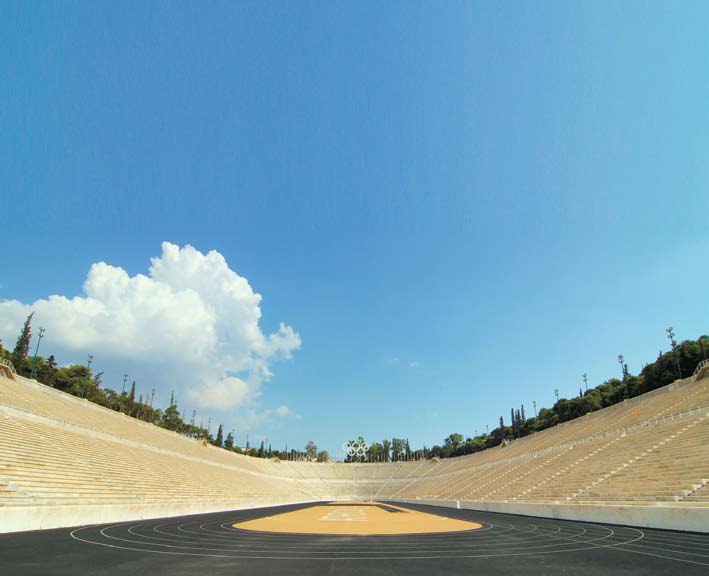
Originally built in the 4th century B.C., the
Panathenaic stadium (Vasileos Konstantinou,
Mets, 210 3251744) was remade in marble
by Lycurgus in 329 B.C. for the athletic
event of Panathinaea. During this annual
athletic event, the stadium hosted racing,
boxing, jumping, javelin throw, chariot and
horse racing. It was expanded by Herodes
Atticus in 144 A.D. to accommodate 50,000
people, while in Roman times it was used as
an arena. Also known as Kallimarmaron
(beautiful marble), it was rebuilt once again
with funds provided by Athenian benefactor
George Averoff to host the first modern
Olympic Games of 1896. During these
Games, about 280 male athletes from 12
countries participated in 43 events, covering
athletics (track and field), cycling, swimming,
gymnastics, weightlifting, wrestling, fencing,
shooting, and tennis. Its hairpin-like shape
adds to its uniqueness, setting it apart from
modern stadia. Up until the ‘50s, Ilissos River
streamed in front of it. The remnants of the
Temple of Olympian Zeus and Hadrian’s
Gate are a five minute walk from the venue.
In the Athens 2004 Olympics, the stadium
hosted the archery competition and the
marathon finish line. Today it is a tourist
attraction, used only for special events.
